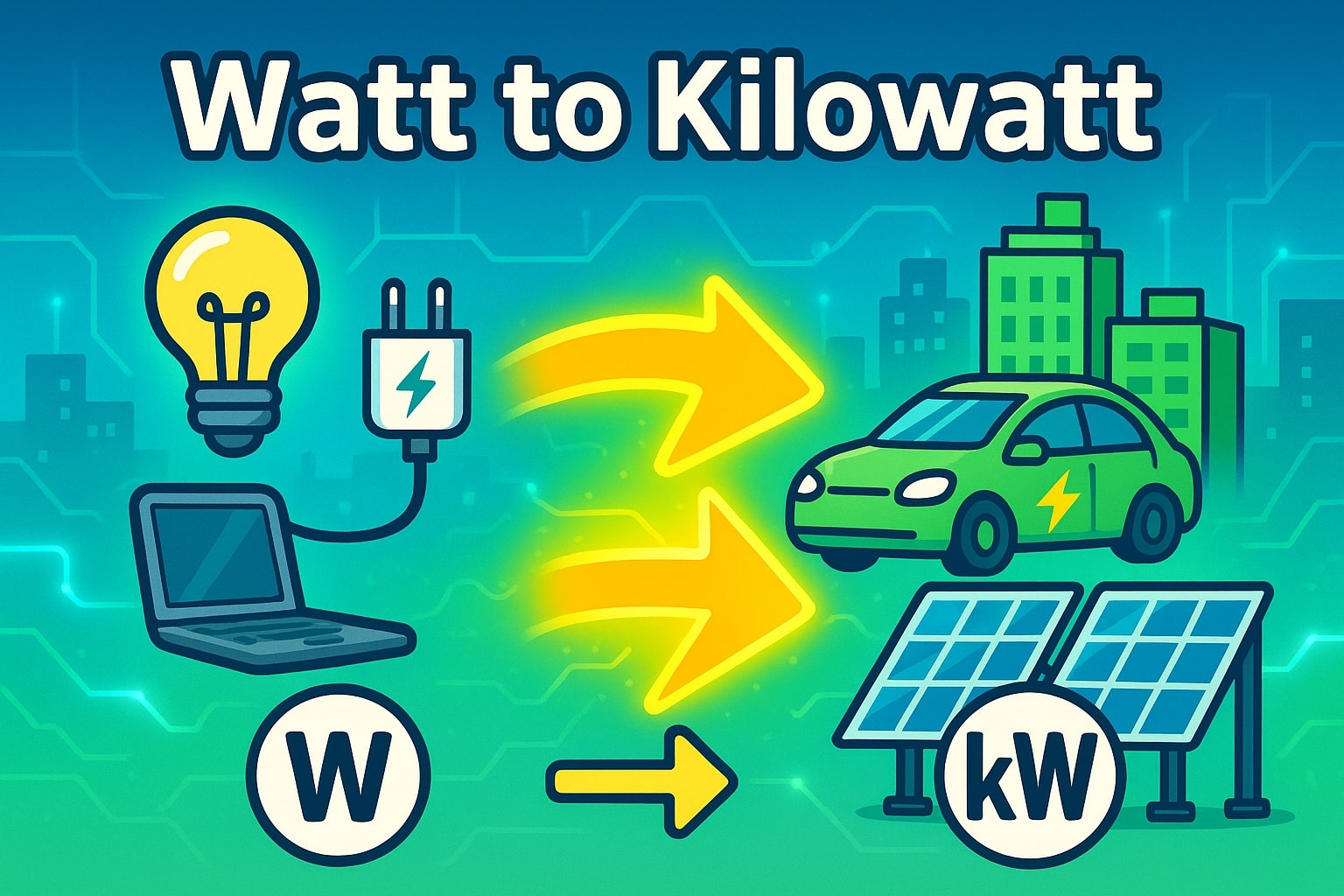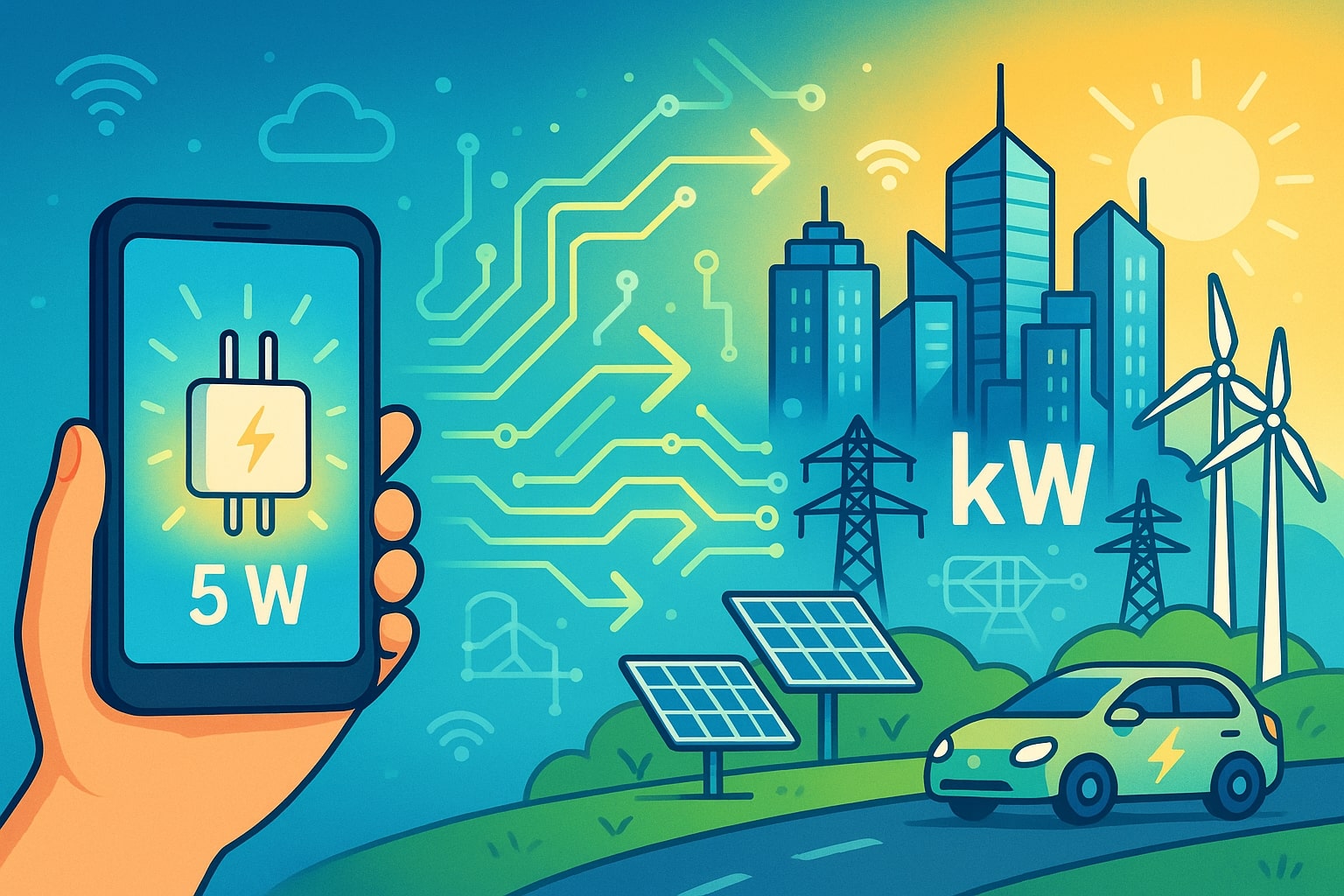watt to kilowatt – How to convert W to kW
From the light bulb in your bedroom to the massive servers running the internet, power is everywhere. The watt (W) is the small-scale unit we see on appliances and gadgets, while the kilowatt (kW) is what shows up on your electricity bill or when talking about renewable energy. Converting watt to kilowatt helps us connect tiny devices to the big picture of energy use.

What is a watt (W)?
A watt is the SI unit of power, equal to one joule per second. Everyday items like phone chargers (5–20 W), laptops (50–100 W), and microwaves (1000 W) are measured in watts.
What is a kilowatt (kW)?
A kilowatt equals 1000 watts. It’s commonly used for larger energy scales — home energy use, car engines, or solar panel output. Electricity bills often calculate consumption in kilowatt-hours (kWh).
How to convert watt to kilowatt
Kilowatt (kW) = Watt (W) ÷ 1000
Example:
Kilowatt = 2500 W ÷ 1000 = 2.5 kW
For quick results, you can try the Conversion Tools. Related calculators like the Speed Converter are also available.
Do you know?
-
About watt: A single LED light bulb may consume just 10 W — but if every home in a city left one on, it could add up to several MW (millions of watts).
-
About kilowatt: A typical household in Europe uses around 10 kW at peak load — equal to running 10,000 small LED bulbs at once.
From Smartphones to Smart Cities
When Apple launched the iPhone in 2007, its tiny charger used about 5 W of power. Multiply that by billions of phones, and suddenly we’re talking gigawatts of demand worldwide. That’s the scale jump from W to kW (and far beyond).
Cities are now planning “smart grids” that track usage in kilowatts, balancing millions of tiny watt-level devices across entire neighborhoods. This shows why conversions matter: the same unit that measures your phone charger also helps design the energy systems that keep skyscrapers lit and trains running.

A Formula That Connects the Small and the Big
The math is simple — divide by 1000. But converting watt to kilowatt is more than arithmetic. It’s a way of translating the energy of small electronics into the same language as homes, cities, and even nations. From your bedside lamp to entire smart cities, this conversion keeps power measurable and meaningful.

